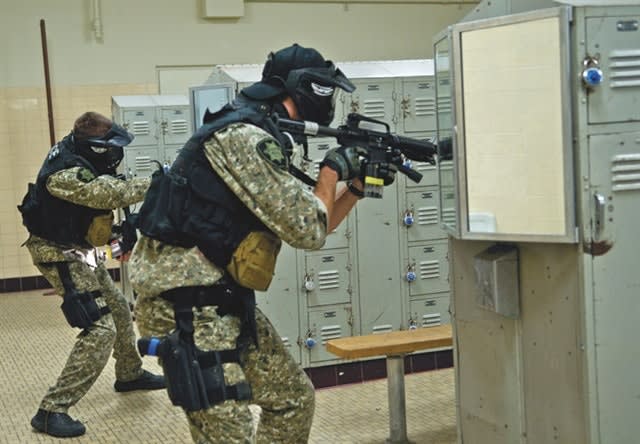If they shoot, they should be able to articulate why—examples include reaction is slower than action or the shooter failed to comply and was a deadly threat. If they don't shoot, they should have one voice on the team talking to the suspect and then work as a team when he complied with instructions (on cue from controller). All the while, the team is paying attention to danger areas. Plus one. This one works well after the first two shoot scenarios as the student are amped up and have to slow down and assess. Either outcome is correct, but they must articulate the course of action. I've done this one several hundred times and it works out to about a 50/50 split.
Scenario #4, Back Shooter: The team is briefed that an active shooter is on the loose and killing victims. They advance and see numerous role players fleeing out of a room and away from them down a hallway, screaming, "He's going to kill us." The shooter comes out of the same room, immediately on their tail. The gun is at his side, never pointed at the role players or police. He matches the description given at the briefing. He keeps advancing after the students.
The goal of this one is for the team to make a quick assessment and put down the shooter before he gets around a corner (loss of visual) or shoots the victims. We don't train to shoot suspects in the back. The debrief can begin with a question from the controller. "You just shot a suspect in the back. Can you articulate why?" Then have them build their probable cause from the briefing on to the conclusion.
Scenario #5, Room Clearing: Contact with the shooter has been lost. The controller instructs the team to begin clearing rooms (stack and hook or criss-cross). They clear a number of rooms, find the shooter, and engage.
The goal of this one is to put down the shooter without rushing into the room (plus one). Victims in the room require a quicker response, but not a reckless entry. The shooter can also transition into barricade mode, and the team must reevaluate the situation. Bring him out with clear concise instructions spoken by one team member. In either version, the team always watches danger areas for another threat.













